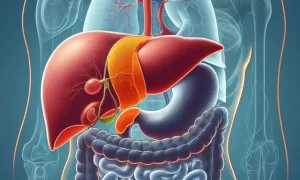The probability of death will double in the next 10 years if middle-aged and elderly people can’t stand on one foot for 10 seconds
- Normal Liver Cells Found to Promote Cancer Metastasis to the Liver
- Nearly 80% Complete Remission: Breakthrough in ADC Anti-Tumor Treatment
- Vaccination Against Common Diseases May Prevent Dementia!
- New Alzheimer’s Disease (AD) Diagnosis and Staging Criteria
- Breakthrough in Alzheimer’s Disease: New Nasal Spray Halts Cognitive Decline by Targeting Toxic Protein
- Can the Tap Water at the Paris Olympics be Drunk Directly?
The probability of death will double in the next 10 years if middle-aged and elderly people can’t stand on one foot for 10 seconds
- Should China be held legally responsible for the US’s $18 trillion COVID losses?
- CT Radiation Exposure Linked to Blood Cancer in Children and Adolescents
- FDA has mandated a top-level black box warning for all marketed CAR-T therapies
- Can people with high blood pressure eat peanuts?
- What is the difference between dopamine and dobutamine?
- How long can the patient live after heart stent surgery?
The probability of death will double in the next 10 years if middle-aged and elderly people can’t stand on one foot for 10 seconds.
A new study published recently in the British Journal of Sports Medicine found that if middle-aged and elderly people were unable to stand on one foot for 10 seconds, the risk of death doubled in the next 10 years.
According to the researchers, this simple and safe balance test could be included in routine health checks in older adults.

Balance is generally well maintained compared to aerobic fitness, muscle strength and flexibility, the researchers said. But after the age of 60 the situation began to deteriorate rapidly.
However, balance assessments are usually not included in health checkups for middle-aged and older men and women.
This may be because there are no standardized tests, and with the exception of falls, there is little hard data linking balance to clinical outcomes.
So scientists wanted to figure out whether the balance test might be a reliable indicator of a person’s risk of dying from any cause over the next decade, and thus might be worth incorporating routine health checks later in life.
The researchers utilized participants from the CLINIMEX exercise cohort study.
This was established in 1994 to assess the association between various physical fitness measures, exercise-related variables and conventional cardiovascular risk factors with poor health and death.

The current analysis included 1702 participants aged 51-75 years (mean 61 years) at first examination between February 2009 and December 2020. About two-thirds (68%) were male.
As part of the exam, participants were asked to stand on one leg for 10 seconds without any additional support.
To improve the standardization of the test, participants were asked to place the front of the free foot on the back of the contralateral calf, while keeping the arms by their sides and looking straight ahead. A maximum of 3 attempts per foot are allowed.
Overall, about one in five (20.5%; 348) participants failed the test. The inability to do this rose with age, starting at age 51-55 and more or less doubling in the subsequent 5-year interval.
Unable to stand on one leg for 10 seconds: nearly 5% of 51-55 year olds; 8% of 56-60 year olds; slightly less than 18% of 61-65 year olds; – Among 70-year-olds, it was just under 37%.
There was no clear time trend for differences in the number of deaths or causes between those who were able to complete the test and those who were not.
But those who failed the test had a significantly higher proportion of deaths: 17.5% versus 4.5%, reflecting an absolute difference of just under 13%.
More than half (about 54%) of 71-75 year olds were unable to complete the test. In other words, people in this age group were more than 11 times more likely to pass the test than those 20 years younger.
In general, those who failed the test had poorer health: higher rates of obesity, and/or heart disease, high blood pressure, and unhealthy lipid profiles. Type 2 diabetes was 3 times more common in this group: 38% versus about 13%.
After accounting for age, gender and underlying conditions, being unable to stand on one leg for 10 seconds was associated with an 84% increased risk of death from any cause over the next ten years.
This is an observational study, so no cause can be established. Because the participants were all white Brazilians, the findings may not apply to other races and countries, the researchers cautioned.
The probability of death will double in the next 10 years if middle-aged and elderly people can’t stand on one foot for 10 seconds
(source:internet, reference only)
Disclaimer of medicaltrend.org
Important Note: The information provided is for informational purposes only and should not be considered as medical advice.



